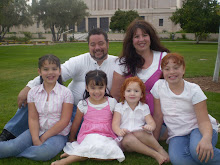Emergency Communications
In the event of emergency, information is broadcast on local television stations, KTAR 92.3 FM or KEC94, Phoenix VHF Frequency 162.550 for Emergency Alert System announcements
In the event of emergency, information is broadcast on local television stations, KTAR 92.3 FM or KEC94, Phoenix VHF Frequency 162.550 for Emergency Alert System announcements
After a large scale disaster in our area, the existing communications systems may not be available either due to physical damage or system overload. Wires to telephones may be damaged and cellular phone towers and antennas may fail or lose power.
If your family is not together when disaster strikes, you need to have a plan in place to reunite your family. Consider preparing a contact card for each family member. Have family members keep these cards handy in a wallet, purse, backpack, etc. You may want to send one to school with each child to keep on file. Pick a friend or relative who lives out-of-state for household members to notify they are safe.
Consider including the following items in your diaster kit or have them readily available:
1. whistle: if you are trapped, blowing the whistle can alert rescuers to your location.
2. radio: not just any radio - one designed for emergency situations and preferably, one manufactured to operate independently from electricity or batteries.
3. Hand-held walkie talkies with additional batteries These usually have a 2-5 mile communication area but, can be useful between family members if you must separate temporarily during the disaster.
4. cell phone: sometimes cell phone service remains intact during a disaster or emergency situation. Remember to keep your cell phones charged completely. Many emergency hand-crank radios available also have cell-phone charging abilities.
5. short-wave ham radios- this option requires purchasing special equipment and obtaining a license. For more information, visit www.hfradio.org.
For more information on communicating during emergencies, please call the FCC's Consumer Center toll-free at 1-888-225-5322 (TTY: 1-888-835-5322).






No comments:
Post a Comment